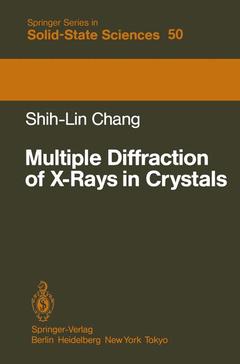The three-dimensional arrangement of atoms and molecules in crystals and the comparable magnitude of x-ray wavelengths and interatomic distances make it possible for crystals to have more than one set of atomic planes that satisfy Bragg's law and simultaneously diffract an incident x-ray beam - this is the so-called multiple diffraction. This type of diffraction should, in prin ciple, reflect three-dimensional information about the structure of the dif fracting material. Recent progress in understanding this diffraction phenome non and in utilizing this diffraction technique in solid-state and materials sciences reveals the diversity as well as the importance of multiple diffraction of x-rays in application. Unfortunately, there has been no single book written that gives a sys tematic review of this type of diffraction, encompasses its diverse applica tions, and foresees future trends gf development. It is for this purpose that this book is designed. It is hoped that its appearance may possibly turn more attention of condensed-matter physicists, chemists and material scientists toward this particular phenomenon, and that new methods of non-destructive analysis of matter using this diffraction technique may be developed in the future.




